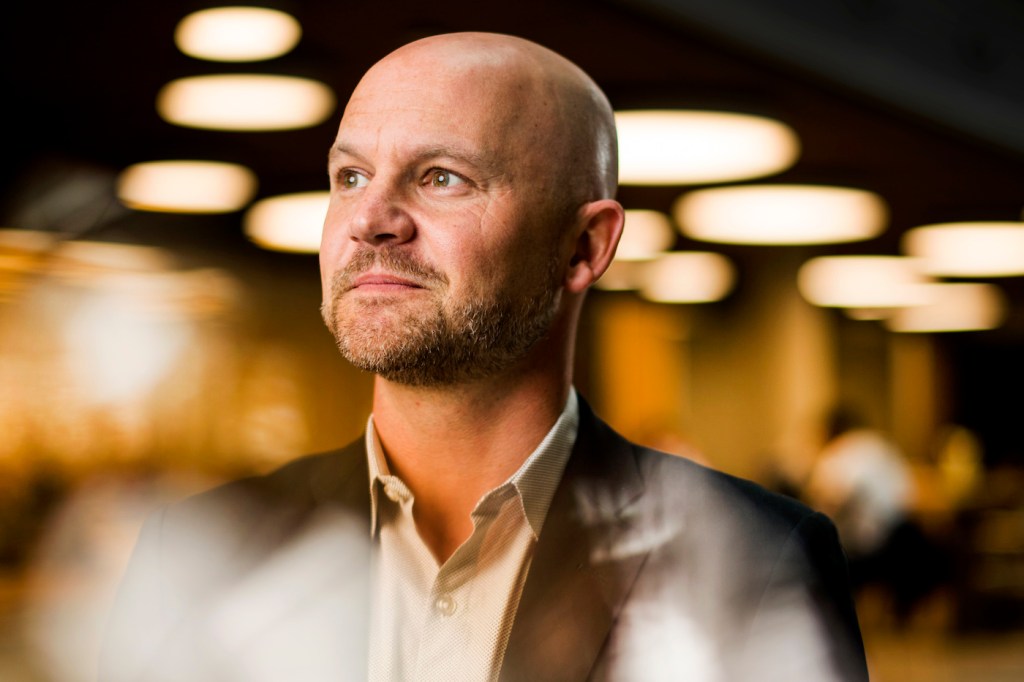A Northeastern professor’s algorithm can predict behavior in autistic children

For some families, having a child with autism who behaves aggressively to themselves or others can mean self-imposed confinement. Unpredictable aggression is dangerous, so parents may choose to avoid restaurants, parks, and other social settings. But living in this safety bubble leaves kids with autism little room to explore the world. And it diminishes everyone’s quality of life.
Now, Northeastern behavioral scientist Matthew Goodwin has developed a way to predict when an autistic child or adolescent will behave aggressively before it happens. His research offers hope for families with children on the autism spectrum to lead safer and more enriching lives.
Sensing danger
Understanding an autistic child’s behavior requires an understanding of his or her stress, anxiety, and arousal, said Goodwin, an interdisciplinary associate professor with joint appointments in the Bouvé College of Health Sciences and the College of Computer and Information Sciences. But people with autism can’t always express how they feel, either with words or facial expressions.
To overcome this challenge, Goodwin and his colleagues from Northeastern, University of Pittsburgh, and Maine Medical Center devised a system that employs wearable biosensors, a mobile app, and a machine learning algorithm. The system allows them to wirelessly measure bodily changes in individuals with autism and use that data to predict when they will behave aggressively.
Goodwin made his discovery during a study involving 20 autistic children who had been admitted to a psychiatric inpatient hospital because they were engaging in high rates of unpredictable behavior dangerous to themselves or others. Goodwin and his team outfitted the children with biosensors that measured movements, heart rate, skin surface temperature, and perspiration.
Goodwin’s research team observed the kids interacting with clinicians over repeated four-hour periods. The researchers used the mobile app to track all the times each patient was aggressive. This observational data was synchronized with a clock in the biosensors the children wore. This allowed researchers to match each aggressive episode with the bodily changes that occurred before, during, and after.
“We had 87 hours of observations using that method with 20 inpatient youth with autism, capturing 548 time-stamped aggressive episodes with accompanying biosensor data,” Goodwin said.
The predictive power of data
The researchers then fed the data to a machine learning algorithm. They hoped the historical record of a child’s behavior could be used to predict future behavior. And it worked.
“We found that if we use the last three minutes of physiological data, we could predict whether that person is going to behave aggressively in the subsequent one minute with 84 percent average accuracy,” Goodwin said.
This ability is a major breakthrough for families and clinicians, Goodwin said. It means they can prepare for aggressive episodes by clearing the room or focusing attention on the child. Even better, a clinician or parent may be able to prevent the incident altogether by cuing the child to take deep breaths or engage in a calming activity.
Right now, Goodwin likens the algorithm’s capabilities to early versions of Siri or Alexa. These virtual assistants are adept at understanding our speech, regardless of race, ethnicity, dialect, age, or education level. But that wasn’t always the case, Goodwin said.
“Back in the day, you had to read known passages so it could learn how you pronounce certain words. We’re kind of in the same boat here. As we get more data from more people over longer periods of time, we should have a larger data set that will work with any new person coming in. But when you first start, you need data for each person individually to train the system before it can perform well,” Goodwin said. He has just received three years of funding from the Department of Defense to undertake more studies that will provide additional data to scale up the project.
Reflecting on April as Autism Awareness Month, Goodwin said there is a need for more resources dedicated to research on education, screening, and more personalized interventions for autism.
“It’s occurring at an alarmingly high rate, is incredibly complex, and a lifelong developmental disorder, so I do think it needs more attention and innovative approaches,” Goodwin said.





